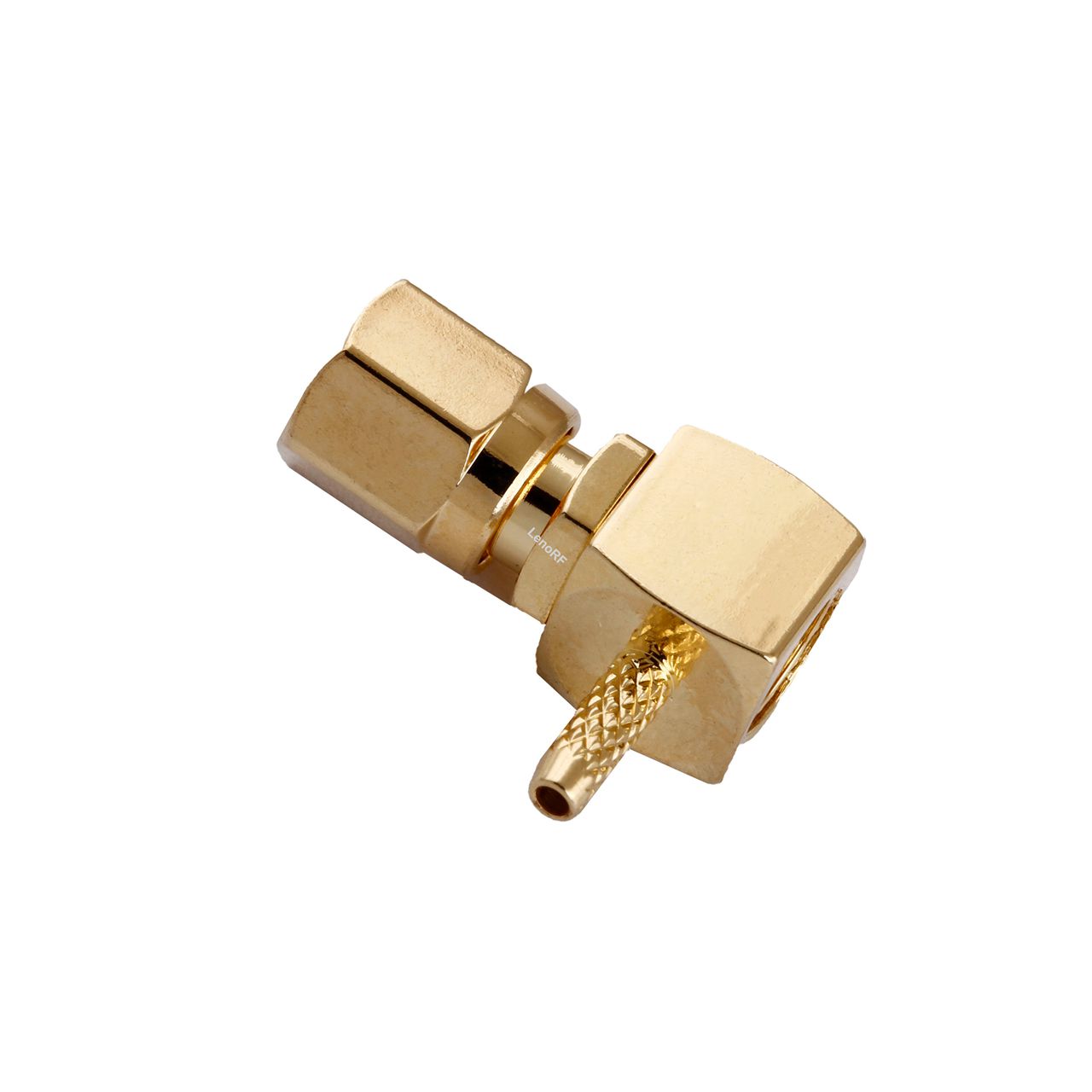Introduction
In the intricate world of radio frequency (RF) technology, connectors play a pivotal role in facilitating seamless and dependable signal transmission. Among the diverse range of connectors available, SMC (SubMiniature C) connectors stand out as threaded connectors designed for efficient operation up to 10 GHz. These connectors offer a screw-on mechanism that ensures a vibration-proof connection, making them suitable for semi-permanent connections and applications in mobile equipment with low Voltage Standing Wave Ratio (VSWR) requirements. In this comprehensive guide, we will delve into the world of SMC connectors, exploring their design, technical specifications, key features, applications, interface standards, and their role in the fields of antennas, telecommunications, and instrumentation.
Understanding SMC Connectors
SMC Plug Connector
![SMC PLUG RIGHT ANGLE CRIMP FOR RG316]()
SMC Jack Connector
![SMC JACK CRIMP FOR RG174]()
1. Design and Construction
SMC connectors represent a threaded evolution of the Snap-On SMB (SubMiniature B) connectors, enhancing their capabilities for specific applications. The threaded coupling mechanism of SMC connectors ensures a secure and vibration-proof connection, making them suitable for semi-permanent installations and use in mobile equipment where maintaining low VSWR is essential.
2. Technical Specifications
To gain a comprehensive understanding of SMC connectors, it is essential to delve into their key technical specifications:
Impedance: 50 Ohm or 75 Ohm
Frequency Range: DC to 10 GHz
Temperature Range: -65⁰C to +165⁰C
Mating Cycles: More than 500 mating and unmating cycles
Coupling Mechanism: 50 Ohm screw-on coupling, per MIL-STD-348
Interface Standards: IEC 60169-9, CECC 22140, MIL-PRF-39012
Dielectric Withstanding Voltage (max.): 750 V RMS
These specifications define the electrical performance, frequency capabilities, temperature range, durability, and compliance standards of SMC connectors, making them versatile for various applications.
Key Features of SMC Connectors
SMC connectors offer a range of key features that make them suitable for a wide array of applications:
1. Impedance Options
SMC connectors are available in both 50 Ohm and 75 Ohm impedance variants, providing flexibility for applications with specific impedance requirements.
2. High-Frequency Capabilities
With a frequency range spanning from DC to 10 GHz, SMC connectors excel in high-frequency applications, making them ideal for demanding RF environments.
3. Temperature Tolerance
SMC connectors exhibit a wide temperature range, with the ability to operate reliably in temperatures ranging from -65⁰C to +165⁰C. This tolerance makes them suitable for applications in extreme environmental conditions.
4. Durability and Reliability
SMC connectors are designed to withstand more than 500 mating and unmating cycles, ensuring long-lasting and dependable performance in various applications.
5. Compliance with Interface Standards
These connectors adhere to recognized interface standards, including IEC 60169-9, CECC 22140, and MIL-PRF-39012, ensuring compatibility with a broad range of equipment and devices.
6. Dielectric Withstanding Voltage
SMC connectors boast a maximum dielectric withstanding voltage of 750 V RMS, ensuring robust insulation and reliable signal transmission.
Applications of SMC Connectors
SMC connectors have found applications in a diverse range of industries and settings, owing to their impressive capabilities and durability. Some notable applications include:
1. Antennas
SMC connectors are commonly used in antenna systems, where high-frequency performance and secure connections are essential for optimal signal reception and transmission.
2. Telecommunications
In the field of telecommunications, SMC connectors play a vital role in connecting RF components and devices, ensuring reliable communication in both wired and wireless networks.
3. Instrumentation
Instrumentation applications benefit from the versatility of SMC connectors, where precise RF connections are required for accurate measurements and data acquisition.
4. Mobile Equipment
SMC connectors find a home in mobile equipment, including portable radios, cellular devices, and wireless communication equipment, thanks to their vibration-proof design and low VSWR performance.
5. Test and Measurement Equipment
In laboratories and testing facilities, SMC connectors are utilized for connecting RF test and measurement equipment, ensuring precise and repeatable results.
Interface Standards
![SMC interface drawing]()
SMC connectors adhere to recognized interface standards, including:
IEC 60169-9: This standard ensures compatibility and interchangeability of SMC connectors with devices and equipment conforming to the same standard.
CECC 22140: CECC standards define the requirements for electronic components, ensuring their quality and reliability.
MIL-PRF-39012: MIL-PRF standards are established by the U.S. Department of Defense to ensure the quality and performance of electronic components used in military applications.
Conclusion
SMC connectors, with their threaded coupling mechanism and high-frequency capabilities, have earned their place as reliable components in the realm of RF technology. Their versatility, durability, and adherence to interface standards make them a preferred choice for engineers and designers working on a wide range of applications, from antennas and telecommunications to instrumentation and mobile equipment.
As technology continues to advance, SMC connectors remain a valuable and accessible solution for RF connectivity needs. Their ability to deliver a vibration-proof connection in semi-permanent installations, coupled with their low VSWR performance, ensures that they will continue to play a significant role in the ever-evolving landscape of antennas, telecommunications, and instrumentation.


















